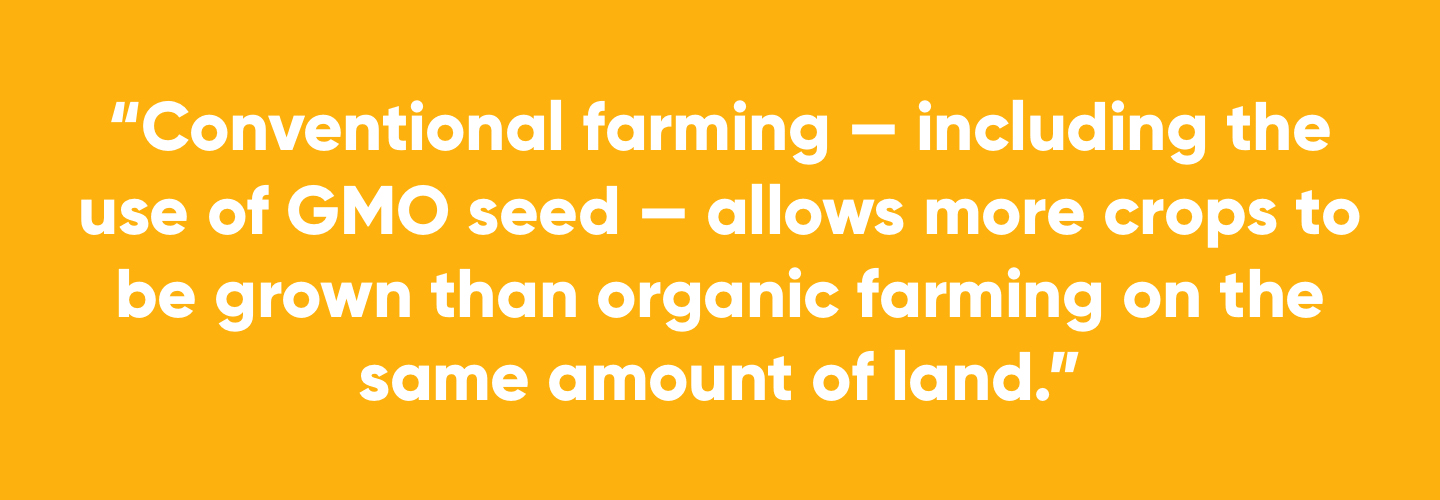As the wife of a conventional (aka nonorganic) farmer, I’m also interested in learning more about conventional and organic farming to ensure I am making the right choices for my family. My first question would be: Should I spend extra cash at the grocery store for organic options? There are some details not everyone is aware of; here are three:
1. The added cost doesn’t add nutritional value.
Nutritionally speaking, organic and conventional fruits and vegetables are very similar. Reasons they would differ depend more on weather, soil and other growing conditions than they do on how they are actually grown. Organic food is more labor-intensive, making it costlier to produce. So it makes sense it would cost more to buy at the supermarket.
2. Organic farming uses more land.

On a planet where arable farm land is shrinking, using more land to produce less food is not a desirable outcome. Conventional farming — including the use of GMO seed — allows more crops to be grown than organic farming on the same amount of land. In fact, without pesticides and biotech crops, we’d need 50% more farmland in Canada to grow what we grow today.1
3. All farm products, both organic and conventional, are regulated.
On a positive note, in both Canada and the United States, crop protection products (pesticides) are regulated so farmers, whether organic or conventional, follow rules on how these products are used to support the growth of their crops.
For example, north of the border, Health Canada has maximum residue limits (MRLs) that are determined based on science to ensure the food Canadians eat is safe. In fact, the MRLs set for each pesticide-crop combination are set at levels well below the amount that could pose a health concern.2 Translation: Your fruits and veggies are monitored to ensure any traces of chemical on them is at a level so low it is not a risk to your health and what we are eating is safe, regardless of how it’s grown.
Did you catch that? Organic farming uses pesticides, too. It’s a common misunderstanding. We all have our own reasons for choosing to eat the way we do. But I believe we can all get behind informed decision-making, even our organic-only relatives. For a better understanding of pesticides used in organic farming, read The Download on Organic Food.
1CropLife Canada. 2019. Facts and Figures. https://croplife.ca/facts-figures/
2Government of Canada. 2015. Maximum Residue Limits for Pesticides. https://www.canada.ca/en/health-canada/services/consumer-product-safety/pesticides-pest-management/public/protecting-your-health-environment/pesticides-food/maximum-residue-limits-pesticides.html

